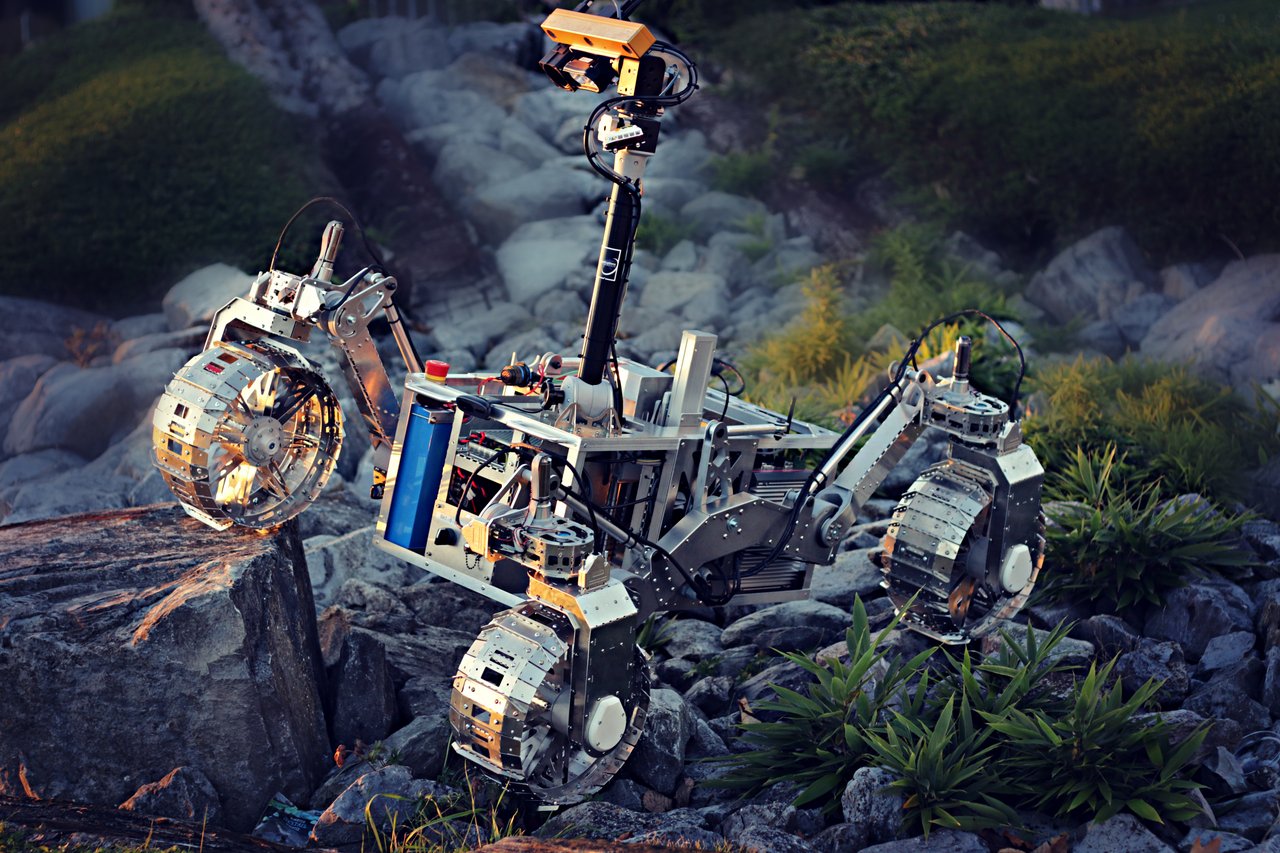Lunar Volatiles Scout
The Objective: Uncover the moon's darkest secret
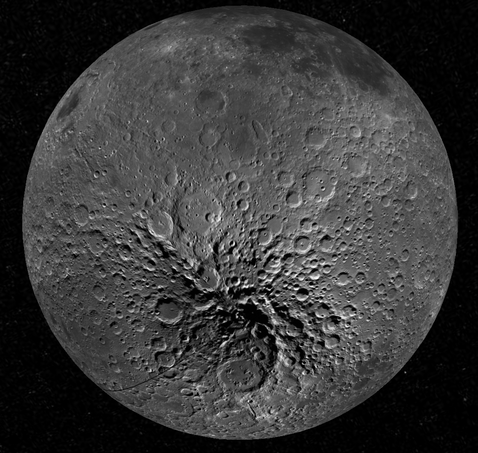
The moon, an arid desert?
Since the Apollo missions, the moon appeared as a hostile, barren landscape. With its surface covered in dry regolith and with the absence of a tempering atmossphere, it is subject to temperature fluctuations of up to +/- 140 K. It was believed, that water, even if it had once existed, would have evaporated into the vacuum of space.
A secret hidden in darkness
The low inclination of the lunar orbit of only 1°32' allows depressed areas in high latitudes to remain in eternal darkness. These permanently shadowed areas are never reached by heating sunlight and therefore remain extremely cold. Infrared observations have shown that in some craters, especially near the lunar south pole, the temperature never exceeds 100 K. This is so cold that water ice could exist, despite the vacuum of space. Such locations were dubbed "cold traps" for their ability to capture volatile elements and gases like H, HO, H2, H2O, CH4, CO2, SO2 and others, that were released by meteroite impact or the solar wind.
A glimpse from space
As these cold traps are never illuminated by the sun, they remain too dark to be observed directly. Nonetheless, recent years have brought new light into the shadow: Remote sensing satellite missions like Chandrayaan-1 or Clementine have provided strong indications that significant amounts of volatiles, among them water, are frozen in cold traps at the lunar poles. In 2009, the NASA LCROSS mission crashed a spent upper rocket stage into the Cabeus crater near the lunar south pole. In the resulting ejection plume, a water content of 5.6 +/- 2.9 % was observed.
Fuel for thought
If these indications were to be revealed as true, huge amounts of water ice could exist on the moon. The Cabeus crater alone, with its 95km diameter, could provide thousands of tons of easily accessible water, hydrocarbons and more. These resources could be used to produce rocket fuel, oxygen, potable water, grow plants and much more - making a permanent human presence on the lunar surface possible.
The challenge
In-situ measurements are necessary as a definitive proof for the existence of lunar water.But so far, no mission has investigated permanently shadowed craters from the ground. Project LUVMI intents to change that.
The Volatiles Sampler - Basic Idea
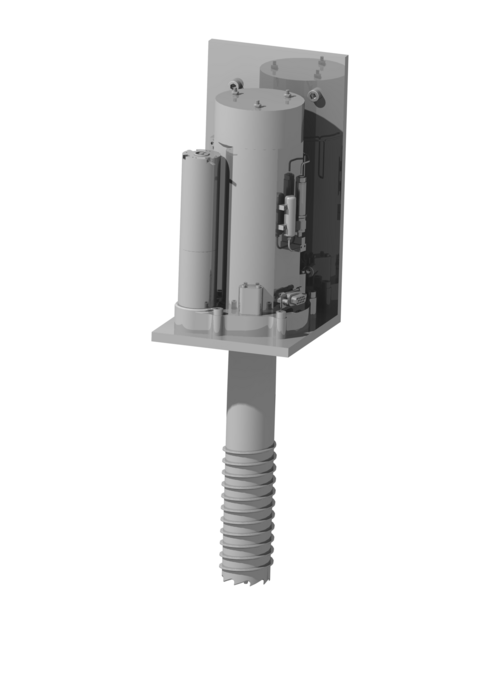
The VS employs a novel approach to soil sampling: Instead of extracting a sample from the soil, which is then placed into an oven and heated for the extraction of volatile compounds, the VS brings the oven to the sample, that is into the ground. The VS consists of a central heating rod, enclosed by a tubular shell, which is inserted into the ground to enclose a cylindrical volume of regolith. The heating of the enclosed sample releases the bound volatiles. The released volatiles increase the gas pressure inside the tubular shell. This gas will either be lost downwards through the soil or upwards through the orifice to the Volatiles Analyser, which is used to analyse its chemical composition. To calculate the total amount of released gas, and thus the original abundance of volatiles in the soil, the amount of lost gas must be known. To this end, two pressure sensors measure the gas pressure before and after the orifice. This allows the calculation of the amount of gas that has passed from the shell to the VA. To determine the amount of gas lost through the regolith, the VS can be pressurized with a reference gas to a specific pressure. The observation of the pressure loss over time then allows to calculate the gas permeability of the soil. This allows to infer the original abundance of volatiles in the soil. This process is illustrated in the video below:
LUVMI
For project LUVMI, an international consortium of 5 partners from science and space industry have come together to design a mobile instrument to access and analyse permanently shadowed regions (PSR). The system consists of a mobile payload support platform (aka Rover) that can support a number of instruments for the analysis of the lunar pole environment.
The main features of the instrument will be the Volatiles Sampler (VS), which is developed by the TUM LRT, and the Volatiles Analyser (VA), developed by the Open University. The VS is a miniature soil sampling instrument, that can be inserted into the lunar regolith. Once inserted, a heating element will raise the regolith's temperature to release any bound volatiles. These released gases will be captured and guided to the VA, a miniature mass spectrometer. Even though the VA weighs less than 500g, the VA is capable of measuring the amount and composition of most relevant volatiles.
In combination, these instruments will have a total mass of less than 1,5kg. Yet they replace an entire laboratory of ovens, mechanisms and instruments.
To support the rovers navigation and sample site selection, LUVMI further features a novel cutting-edge micro-lens array camera. This technology, developed by Dynamic Imaging Analytics, bears great potential for space applications, as it allows to generate 3D-Images from a single camera, provides excellent signal to noise ratios and operates without an active focusing mechanism.
Find out more: LUVMI Poster
LUVMI-X
LUVMI-X is the follow-up Project of the original LUVMI project. An updated and enhanced version of the Volatiles Sampler (VS++) and Volatiles Analyzer (VA++) will again be major elements of LUVMI-X. To further increase the science impact of the proposed mission, additinal scientific instruments have been taken onboard. A Laser Induced Breakdown Spectroscometer (LIBS) by OHB, DLR and the Helmhotz Center for Lasers (???) shall enable remote analysis of chemical rock and dust composition. Furthermore, a Neutronspectrometer by TUM will be used to analyse the radaition environment of the lunar surface.
Besides, the LUVMI-X rover will be designed with a modular pilosophy in mind. This means that the rover has well-defined interfaces on its outer surface, which can accomodate various instruments. Future missions can then be realized by attaching new instruemnts to a flight-proven rover and sending the new package to the Moon.
Areas of Research
Heating moist dust? Sounds Simple!....right?
Not quite. It is true, the purpose of the VS is to heat dust... but, as is always the case in the field of aerospace engineering, things turn out to be slightly more complicated than they appear on first sight.
Mechanical Insertion:
Before the lunar regolith can be heated, the VS needs to be inserted into the ground. However, the VS cannot simply be pushed into the soil. In lunar gravity, the relativly small LUVMI rover does not have enough vertical force available. In other words, if the LUVMI rover would try to push the VS into the ground, it would simply lift itself off the surface. For this reason, the VS is equipped with a drill like shell. The rotating shell, which is equipped with an auger and a cutting edge, can be softly screwed into the ground. This way, the necessary vertical force is reduced, but the soil inside the drill shell remains relativly undisturbed.
Thermal Simulation of Lunar Soil Heating:
Optimising the design of the heater poses a significant challenge. The VS will operate in the extremely cold porous lunar regolith in near perfect vacuum. This poses two significant problems: First, experimental verification of the heater needs to be performed in thermal vacuum chambers, requiring expensive equipment and complicated procedures. Second, due to the extremely low thermal conductivity of regolith in vacuum, it is difficult to measure temperature profiles inside the soil. For these reasons, the heating process is simulated in COMSOL multiphysics to reduce the amount of tests needed and to better interpret test results.
Thermal-Vakuum Testing
While Simulations can reduce the amount of required tests, testing doesn't become obsolete. Tests are still needed to very simulation results. For the LUVMI VS, a thermal vakuum test setup is developed that allows the endto- end testing of a fully functional VS prototype in a representative environment. To achieve this, liquid nitrogen is used to cool the lunar regolith simulant to -196°C in high vacuum.
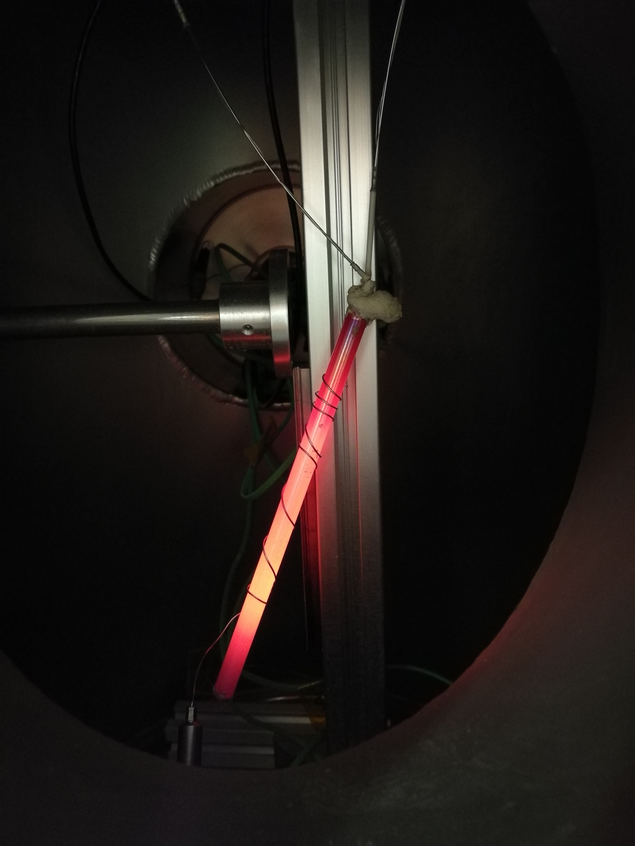
vacuum testing.
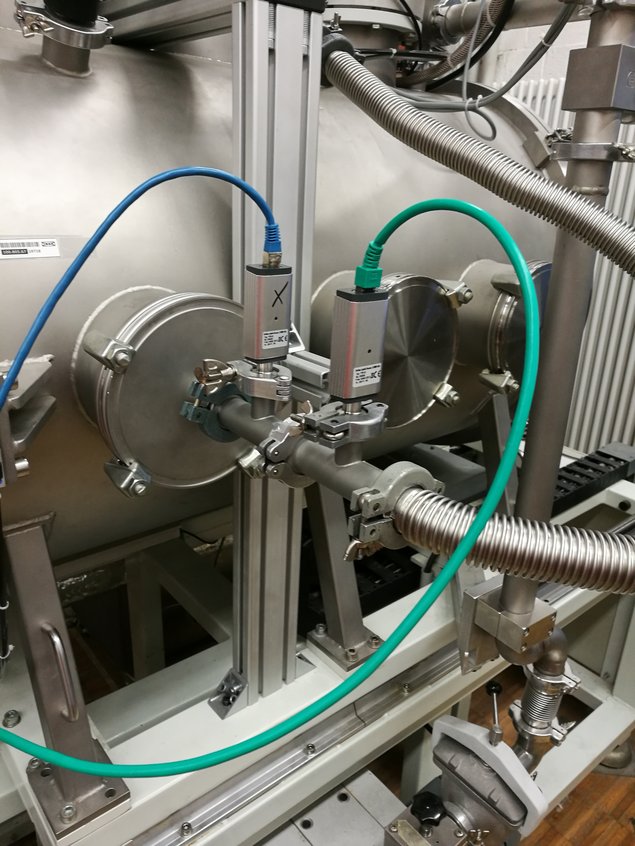
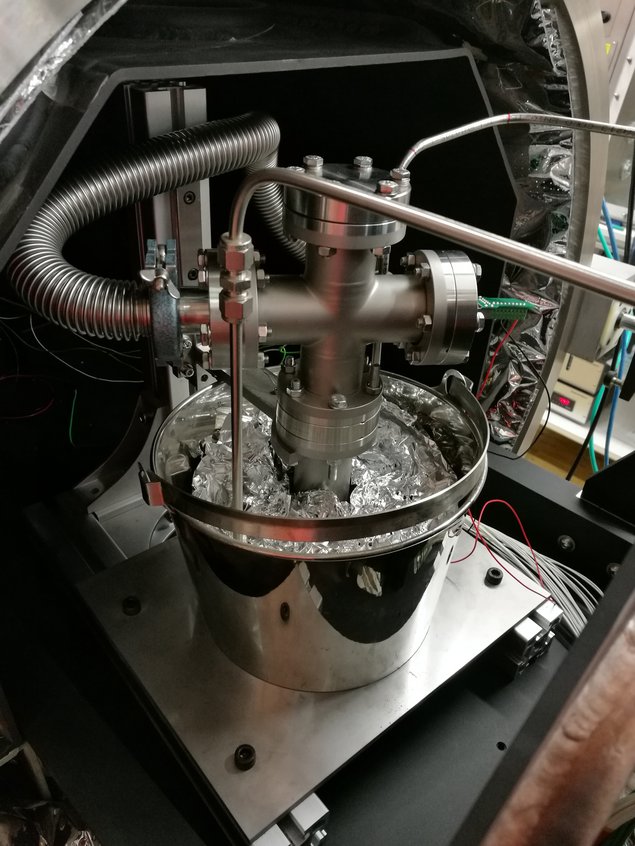
in the vacuum chamber.
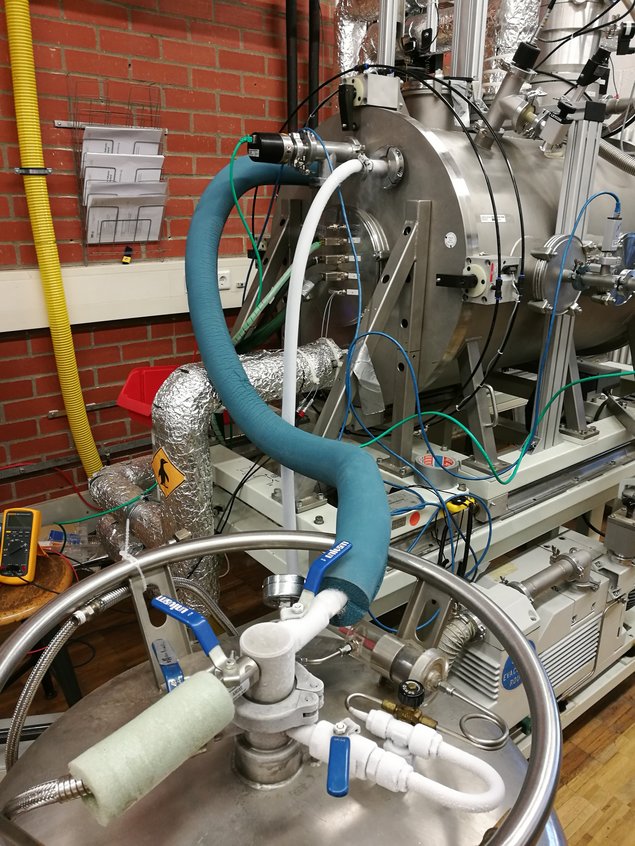
chamber.
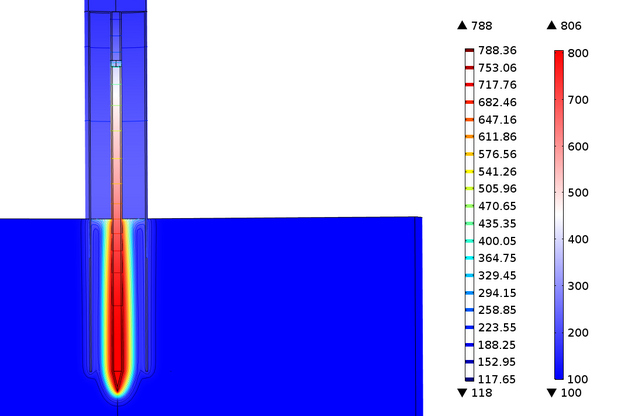
Multiphysics.
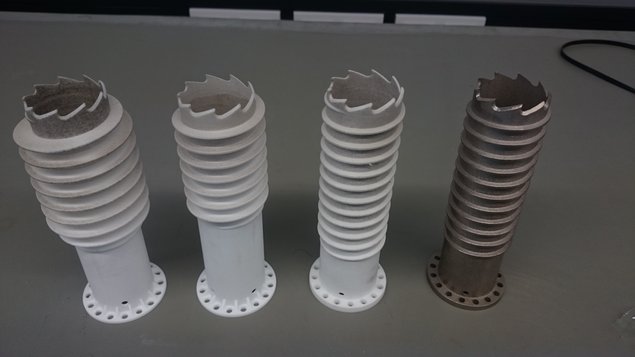
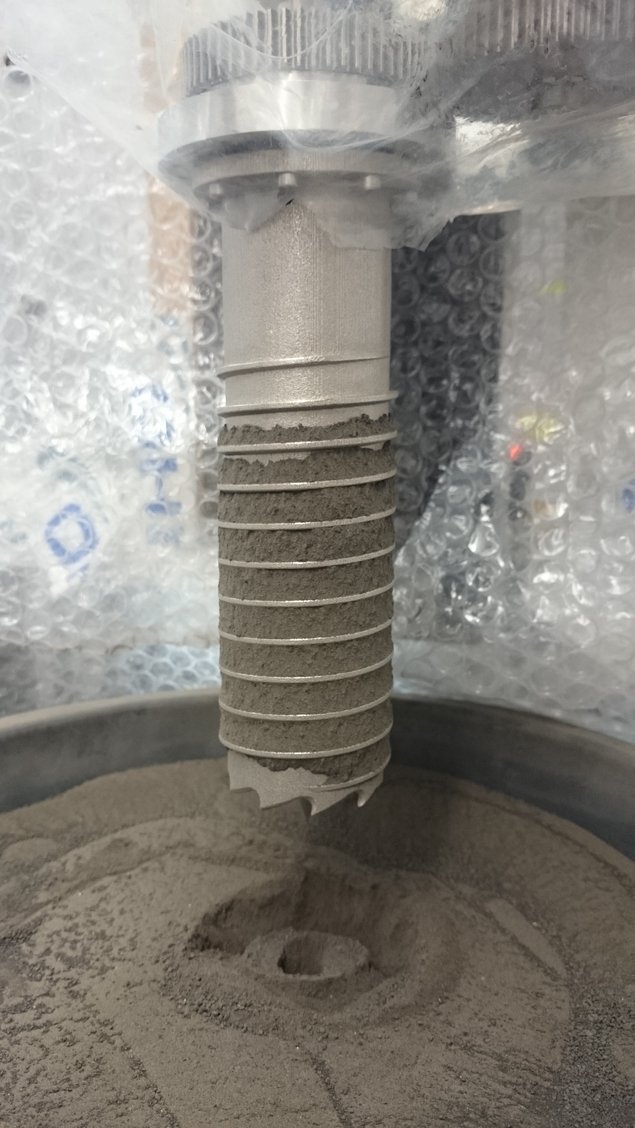
simulant.
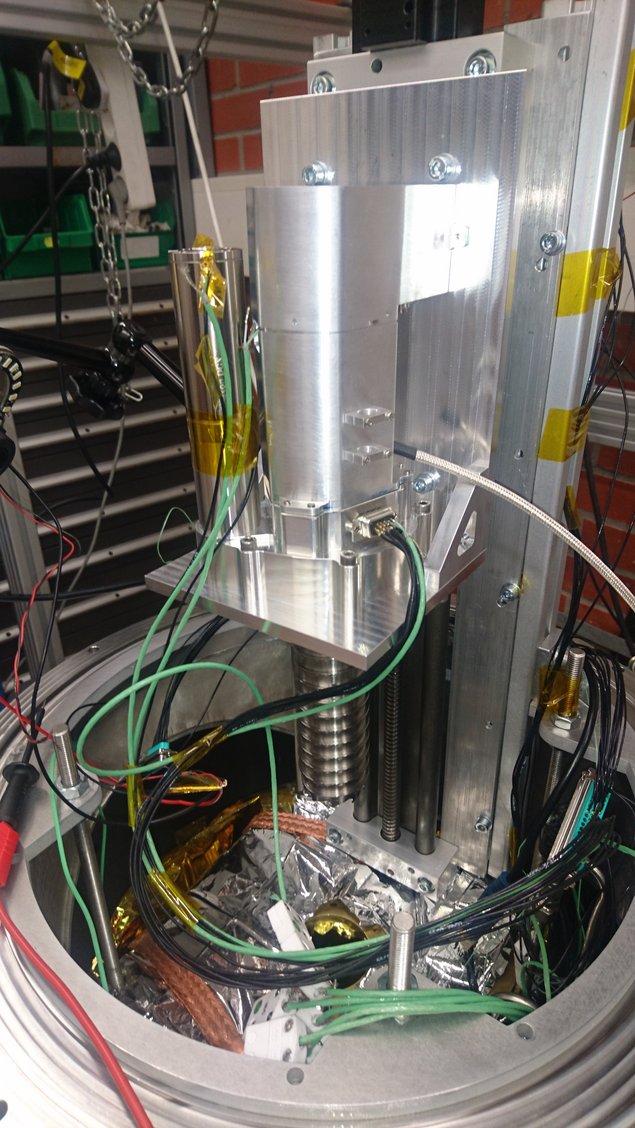
in the thermal vacuum chamber.
LUVMI - Consortium
- Space Applications Services (Belgium) - project coordinator
- The Open University (UK)
- Dynamic Imaging Analytics (UK)
- Technical University of Munich (Germany)
- OHB System AG (Germany)
Publications
- Biswas, J. et al. (2017), Application of the LVS Subsurface Probe on the LUVMI Rover for a Lunar Volatiles Exploration Mission, European Lunar Symposium
- Gancet, J. et al. (2019) Lunar Volatiles Mobile Instrumentation (LUVMI) Project Results, 70th International Astronautical Congress
- Biswas, J. et al. (2020), Searching for potential ice-rich mining sites on the Moon with the Lunar Volatiles Scout, Planetary and Space Science 181, doi: 10.1016/j.pss.2019.104826
- Biswas, J. et al (2021), Energy storage selection and operation for night-time survival of small lunar surface systems, Acta Astronautica 185, doi: 10.1016/j.actaastro.2021.04.042
- Gancet, J. et al (2021), LUVMI-X: An Innovative Instrument Suit and Versatile Mobility Solution for Lunar Exploration, 72th International Astronautical Congress
LVS-PIE Phase A Study
TUM together with OHB and ispace SA, Luxembourg, is also investigating the possibility of integrating the LVS into ispace SA's Polar Ice Explorer (PIE) mission. The PIE rover is based on the Hakuto-R rover, which was developed as part of the Google Lunar XPRICE.
The project investigated both the technical feasibility and the scientific reasonableness. The project showed that the LVS can be integrated into the PIE rover, that the necessary resources and environmental conditions are available for the operation of the instrument and that there is enough mobility to perform measurements at scientifically relevant locations.
It was also shown experimentally that the drill can be operated safely under reduced gravity without rotating uncontrollably.
LVS-PIE Consortium
- Technical University of Munich (Germany)
- OHB System AG (Germany)
- ispace Europe SA (Luxembourg)
Publications
- Gscheidle, C. et al. (2020) Determining Lunar Regolith Water Content Using Permittivity Measurements with the Lunar Volatiles Scout, European Lunar Symposium 2020, Conference Talk
- Gscheidle, C. et al. (2021), Searching for Lunar Water with the LVS on a Small Rover - Phase A Study Results, NASA Exporation Science Forum & European Lunar Symposium 2021, Poster Presentation
- Gscheidle, C. et al. (2022), Challenges of operating a drilling instrument on a small rover at the lunar poles - LVS-PIE phase A study results, Planetray and Space Science 212, doi: https://doi.org/10.1016/j.pss.2022.105426
iDRILL
In the iDRILL project, the LVS design was further developed with the goal of reaching PDR level and passing the corresponding review by experts from the European Space Agency (ESA).
Extensive analyses of the structural mechanics, thermal design and electrical architecture were performed. Also some risk analyses (e.g. regarding the ceramic heater, contamination with lunar dust and terramechanical forces) were performed and appropriate measures were taken to minimize them.
The final review was successfully completed.
